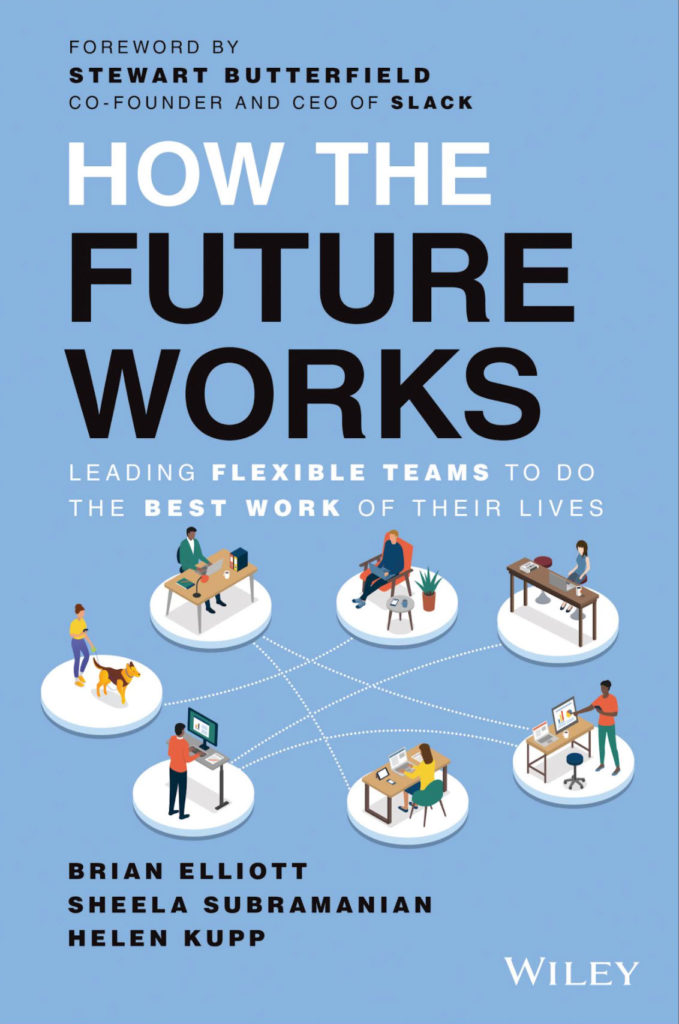It’s not hard to understand why companies are struggling with flexible schedules. Flexible work can feel like the Wild West to a lot of people, a lawless, chaotic place that’s impossible to manage. This is especially true in cultures that have long discouraged flexible arrangements. A blanket policy declaring certain days to be in-office time is concrete and easy to understand (even if the purpose behind it makes less sense). But it really doesn’t have to be the Wild West if you create the right kind of framework for your flexible work strategy. The best way forward is to strike a balance between top-down guidance about what’s important to your company and empowering teams to figure out what works best for them within that framework. Striking that balance requires trust, transparency and some new tools.
In Step 3 we cover one such tool that will help you bridge the disconnect between executives and employees, and create a path from principles and guardrails to tangible changes in behaviors and actions: the Team-Level Agreement.
What Are Team-Level Agreements?
How do teams, and the individuals within those teams, translate your organization-wide principles and guardrails into everyday actions? What does it actually look like to work flexibly on a daily basis?
It’s a challenging question. After all, it’s important to know that you need to keep the playing field level for everyone, but how do you do that when everyone is working in different places and on different schedules? Maintaining a strong sense of community and belonging is important to your organization, but how do you do that for someone who is new to the company and hasn’t met anyone yet? Or if all your team members are working on different schedules?

We have a tool to help you sort all this out called the Team-Level Agreement (TLA). Sometimes called “Team working agreements” or “Team operating manuals,” TLAs are a set of guidelines or “norms” that establish expectations for how all members of a team will work together. Remember, the vast majority of workers want flexibility, especially schedule flexibility, but they also want guidance. When surveyed by Future Forum, nearly two-thirds of knowledge workers (65.6%) said they want a balance between full flexibility and a predictable framework compared to a rigid schedule or one that had no structure whatsoever (which is why our approach is to create “flexibility within a framework”). Team-Level Agreements are a way of continuing to build that framework with the goal of inspiring trust, creating clarity and unlocking performance by being more explicit about how each team chooses to operate.
Of course, organizations will need to define for themselves what “team” means. For some, a TLA may work on a broader level, like among individual departments or groups, if the employees within those broader units have similar needs and functions. The main idea here is to give people autonomy, within a framework, to define clearly what works best for them and what will help unlock their potential, both as individuals and as a group.
Where to Start
Each team will need to create their own TLA that meets the unique needs of their members and function. But, because this will be a new task for most people, top-level leaders will need to provide a starting place: a template agreement with guidance about what’s important to the organization but flexible enough to allow each team to personalize it.
This doesn’t mean that leaders create a set of concrete rules—like Mondays, Tuesdays and Thursdays are in-office days. It means they begin by working through what guidance is appropriate for their organization in order to create a framework for teams to work within. This document is where you begin to strike that balance between the company’s objectives and the needs of the people inside it, and get very explicit about what that looks like for teams on a day-to-day basis.
What Team-Level Agreements Are, and What They Are Not
What Team-Level Agreements are:
- A guided look at how to turn your company’s flexible principles into everyday norms and behaviors.
- What guidance looks like: lots of examples that are specific to the organization—give options to choose from!
What Team-Level Agreements are not:
- Top-down mandates:
Example: “Mondays, Tuesdays, and Thursdays are in-office days for everyone.”
- Or worse,
“Executives must commit to one day a week in the office; junior employees must be in the office five days a week.”
If creating a TLA sounds tricky, don’t worry: we’ll get you started and walk you through the process.
Our starter template has five categories to kick things off:
- Values
- Schedules and Meetings
- Accountability
- Relationships
- Checking In
Values: What Do We Value in Our Working Environment as a Team?
Think about what you’re aiming for before you start determining guidelines or norms that may or may not support that aim. If your flexible work purpose is to unlock potential in your people, then start with what’s important to those people. What do they value?
A handful of values are better than several dozen. Things like principles and values can feel like heady, illusive concepts, so the more complicated you make them, the harder it will be for people to appreciate them.
Schedules and Meetings: How Will We Collaborate?
Schedules
A flexible schedule is not the same as having no schedule at all. Team members still need time together when they can collaborate, debate or exchange information. But that doesn’t mean they need to be available for these things for the entire workday.
Rather than having set “working hours,” what we’ve found works best in most cases is for teams to set what’s called “core collaboration hours.” This is generally an agreed-upon three-to-four hour timespan during the day when team members can expect to be “live” and available to one another for things like meetings or requests for feedback.
Meetings
Being in back-to-back meetings (whether digitally or in-person) is the complete opposite of schedule flexibility, but is often the reality of so many of our work days.
Start by rethinking your meeting culture: What are common habits that your team engages in when meeting? How are they working? How do people feel about them? Dropbox uses what they call their “Three D” model for planning meetings: debate, discuss, decide (and our addition: development). If you’re not doing at least one of those four things, then you’re probably better off communicating in some other way that doesn’t require blocking off time on everyone’s calendar.
Depending on your team members, it might also be important to consider how (or if) you use video for meetings. Research has shown that videoconferencing can leave people feeling fatigued—more so than if they had just attended an in-person meeting or conference call. Reducing the use of video can not only mitigate this problem, but it also helps level the playing field for individuals who might not have the ideal video-on situation at home.
Accountability: How Do We Hold Each Other Accountable?
For flexible work to be successful, teams need to measure success by outcomes, not by how many hours someone works in a day or by how many meetings someone attends. To do that, teams need to focus on defining outcomes, roles and responsibilities upfront and communicating as changes and different needs arise.
Relationships: Coming Together as a Team
One of the most common concerns about flexible work that we hear from executives is that it will negatively impact company culture. Many organizations have spent a whole lot of resources on creating programs and redesigning their offices in an effort to foster a sense of camaraderie and belonging among their people. Their leaders end up wondering: “What will happen to our culture if we aren’t in the office?”
While executives need to be thinking about how to build connections across a flexible organization, individual teams can play a part too by being explicit about what will help build relationships among their fellow team members.
Checking In: Evolving Our Team Agreements Over Time
Finally, teams will need freedom to experiment with operating norms that help them stay aligned as a group while still maintaining flexibility for individuals. No first draft of this agreement should be set in stone, but rather reconsidered regularly to ensure that the norms team members agreed on actually support their work, instead of getting in the way of it. Because we have asked you to start off simply, with just a few norms to get used to at a time, teams may find they need to add more as they go and discover what works. Or, they may end up simplifying, finding that too many norms are counterproductive. And even when no changes are necessary, regular check-ins will help ensure your team stays aligned on this front, especially as objectives change and team members come and go. The TLA is meant to be a flexible document that can grow and change with your business.
Excerpted with permission from the publisher, Wiley, from How the Future Works by Brian Elliott, Sheela Subramanian, Helen Kupp. Copyright © 2022 by Brian Elliott, Sheela Subramanian, Helen Kupp. All rights reserved. This book is available wherever books and eBooks are sold. Photo by @lavju/Twenty20









